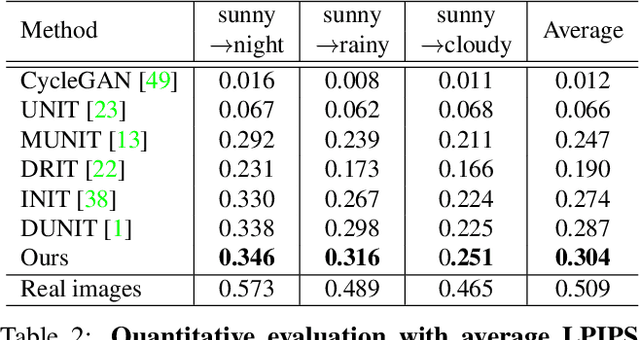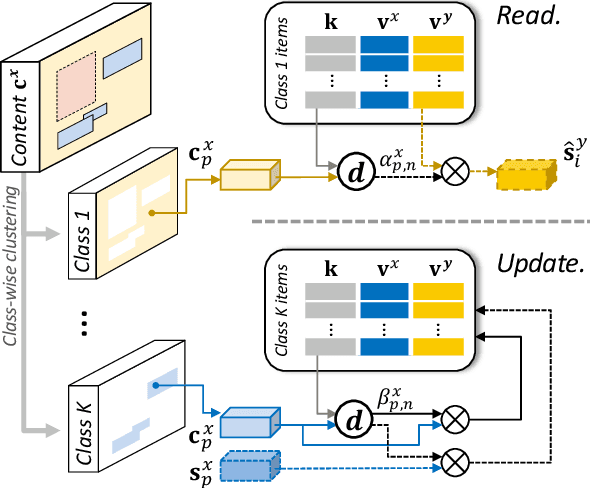Eungbean Lee
EBDM: Exemplar-guided Image Translation with Brownian-bridge Diffusion Models
Oct 13, 2024Abstract:Exemplar-guided image translation, synthesizing photo-realistic images that conform to both structural control and style exemplars, is attracting attention due to its ability to enhance user control over style manipulation. Previous methodologies have predominantly depended on establishing dense correspondences across cross-domain inputs. Despite these efforts, they incur quadratic memory and computational costs for establishing dense correspondence, resulting in limited versatility and performance degradation. In this paper, we propose a novel approach termed Exemplar-guided Image Translation with Brownian-Bridge Diffusion Models (EBDM). Our method formulates the task as a stochastic Brownian bridge process, a diffusion process with a fixed initial point as structure control and translates into the corresponding photo-realistic image while being conditioned solely on the given exemplar image. To efficiently guide the diffusion process toward the style of exemplar, we delineate three pivotal components: the Global Encoder, the Exemplar Network, and the Exemplar Attention Module to incorporate global and detailed texture information from exemplar images. Leveraging Bridge diffusion, the network can translate images from structure control while exclusively conditioned on the exemplar style, leading to more robust training and inference processes. We illustrate the superiority of our method over competing approaches through comprehensive benchmark evaluations and visual results.
Memory-guided Unsupervised Image-to-image Translation
Apr 12, 2021



Abstract:We present a novel unsupervised framework for instance-level image-to-image translation. Although recent advances have been made by incorporating additional object annotations, existing methods often fail to handle images with multiple disparate objects. The main cause is that, during inference, they apply a global style to the whole image and do not consider the large style discrepancy between instance and background, or within instances. To address this problem, we propose a class-aware memory network that explicitly reasons about local style variations. A key-values memory structure, with a set of read/update operations, is introduced to record class-wise style variations and access them without requiring an object detector at the test time. The key stores a domain-agnostic content representation for allocating memory items, while the values encode domain-specific style representations. We also present a feature contrastive loss to boost the discriminative power of memory items. We show that by incorporating our memory, we can transfer class-aware and accurate style representations across domains. Experimental results demonstrate that our model outperforms recent instance-level methods and achieves state-of-the-art performance.
 Add to Chrome
Add to Chrome Add to Firefox
Add to Firefox Add to Edge
Add to Edge